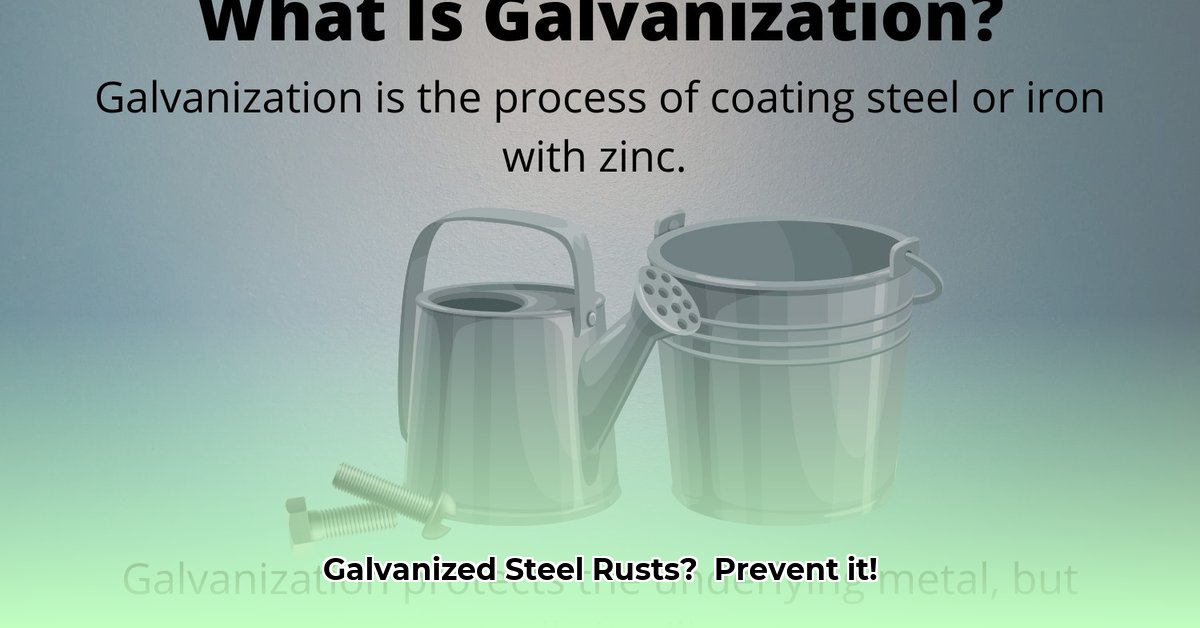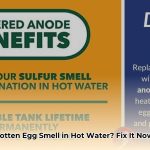Yes, galvanized steel can rust. While it offers excellent protection, it’s not invincible. This guide explains how galvanization works, why it eventually fails, and how you can prevent and repair rust.
How Galvanization Protects Steel
Galvanization involves coating steel with a layer of zinc. This zinc coating provides two lines of defense:
- Barrier Protection: The zinc acts as a physical shield, preventing moisture and oxygen from reaching the steel. Think of it like a raincoat for your steel.
- Sacrificial Anode: Zinc is more reactive than steel. If the coating is scratched, the zinc corrodes first, sacrificing itself to protect the steel. It’s like a bodyguard taking a bullet for the VIP.
Why and How Galvanized Steel Rusts: Chinks in the Armor
Even the best armor has weak points. Several factors can compromise the zinc coating:
- Scratches and Damage: These create direct paths for moisture and oxygen to reach the steel.
- Harsh Environments: Coastal areas with salty air and industrial zones with pollutants accelerate corrosion. Think acid rain slowly dissolving a stone statue.
- Prolonged Moisture: Constant dampness weakens the zinc over time, like a relentless wave against a seawall.
How Long Does the Protection Last? A Matter of Circumstances
The lifespan of galvanized steel varies depending on environmental conditions and the thickness of the zinc coating.
- Rural Environments: 50+ years is common. Think of a well-maintained car, kept in a garage and driven with care.
- Coastal Environments: 20-30 years is more likely due to the corrosive salt spray. Imagine that same car exposed to harsh winters and road salt.
- Thicker Coatings (e.g., G90): Offer longer protection than thinner coatings (e.g., G60). A thicker suit of armor takes longer to breach.
Preventing Rust: Proactive Strategies
Here’s how to keep your galvanized steel in top condition:
- Choose Wisely: Select the right grade of galvanized steel for your environment. Consult a professional for guidance.
- Handle with Care: Avoid scratches during handling and installation. Protect your steel like a delicate piece of china.
- Regular Cleaning: Wash with mild soap and water to remove corrosive deposits. Think of routine maintenance, like washing your car.
- Seal it Up: Apply a sealant or paint designed for galvanized steel for added protection, especially in harsh environments. Like a raincoat for your steel.
Repairing Rust Damage: Damage Control
If rust appears, take these steps:
- Remove the Rust: Use a wire brush, sandpaper, or a power tool with a wire wheel attachment.
- Prime and Protect: Apply a zinc-rich primer or cold galvanizing compound to restore the protective layer. Think of it like patching a hole in the armor.
- Assess and Replace: If the rust is extensive, replacing the affected section may be necessary. Safety first!
Alternatives to Galvanized Steel
Here’s how galvanized steel compares to other materials:
| Material | Pros | Cons |
|---|---|---|
| Galvanized Steel | Affordable, good corrosion resistance | Can eventually rust |
| Stainless Steel | Excellent corrosion resistance, aesthetically pleasing | More expensive |
| Aluminum | Lightweight, corrosion-resistant | Not as strong as steel |
Stainless steel offers superior rust resistance but comes at a premium. Aluminum is lightweight and corrosion-resistant but less strong. Some experts suggest exploring newer composite materials, though research is ongoing.
Conclusion: Extending the Life of Your Galvanized Steel
While galvanized steel can rust, proper care and maintenance can significantly extend its lifespan. By understanding the factors that contribute to rust and implementing preventative measures, you can keep your galvanized steel looking its best for years to come. For more in-depth information, consult resources from the American Galvanizers Association (AGA). Ongoing research may lead to even more effective corrosion prevention methods in the future.
- Choosing the Right Portable Hydro Turbine for Your Needs - December 14, 2025
- Best Portable Hydro Generators for Off-Grid and Outdoor Power - December 13, 2025
- Choosing the Right Generator with Water for Off-Grid Power - December 12, 2025
















